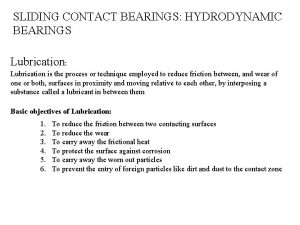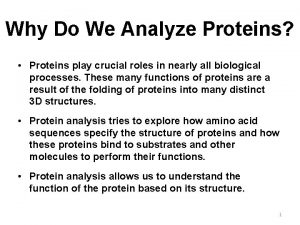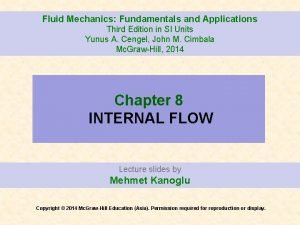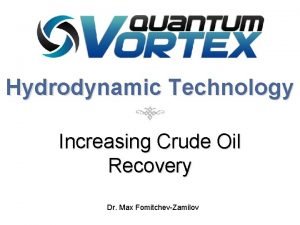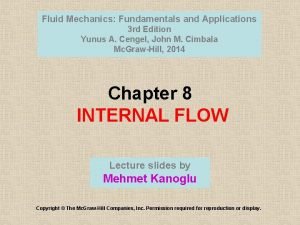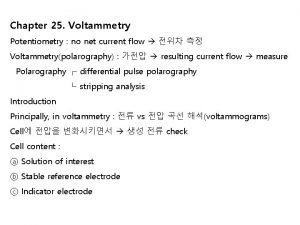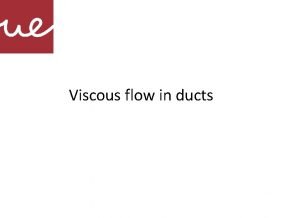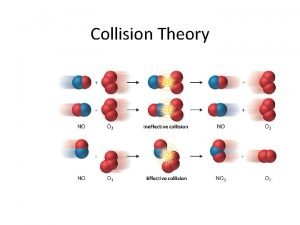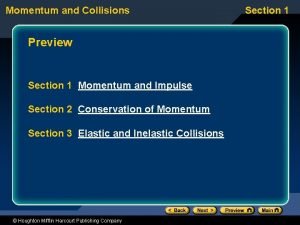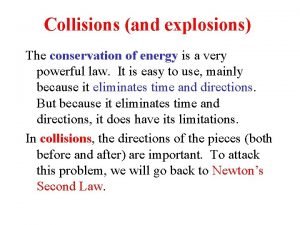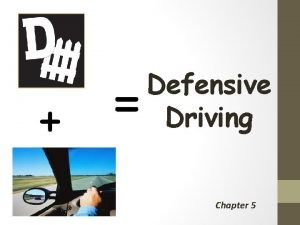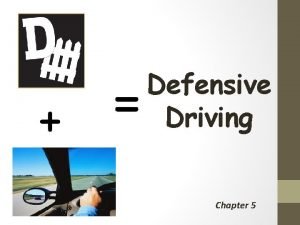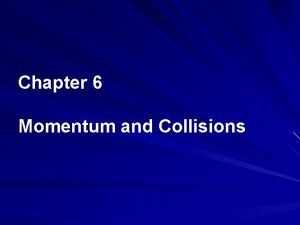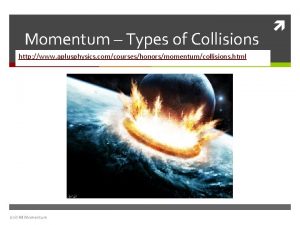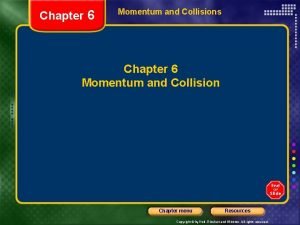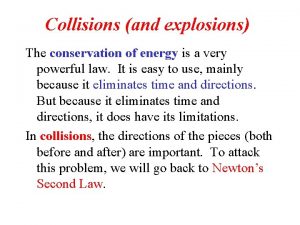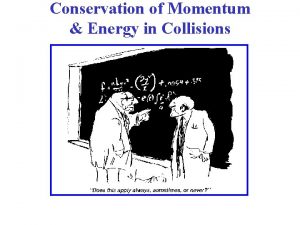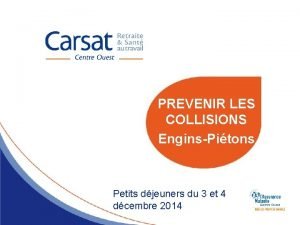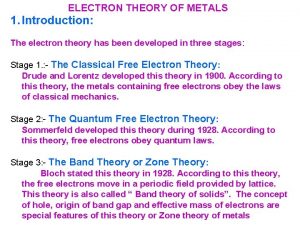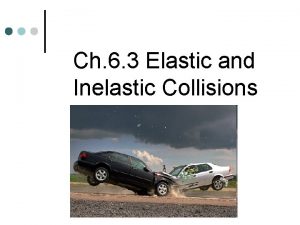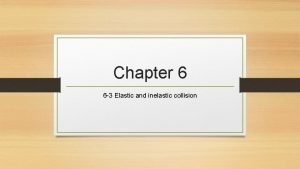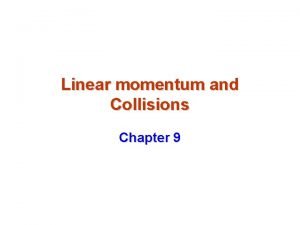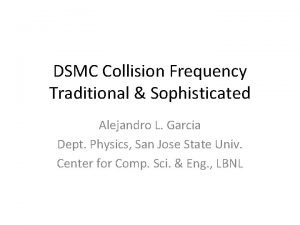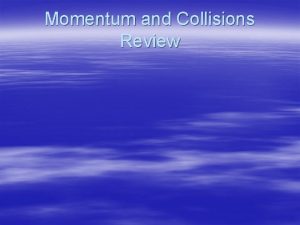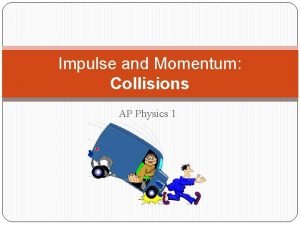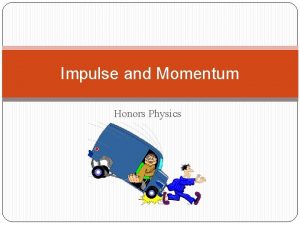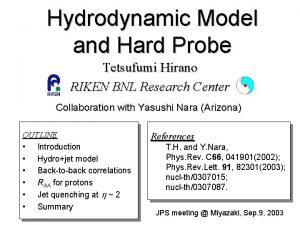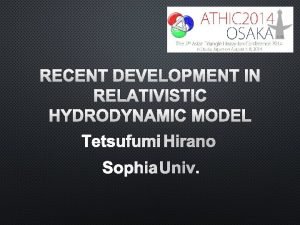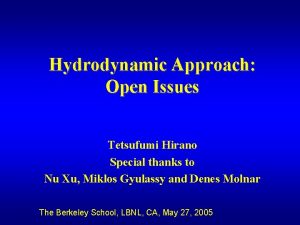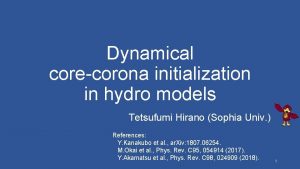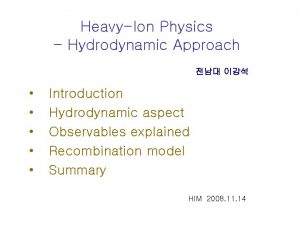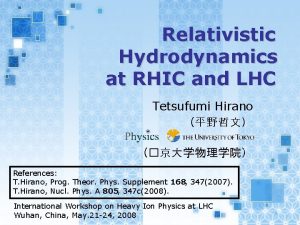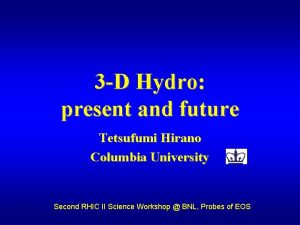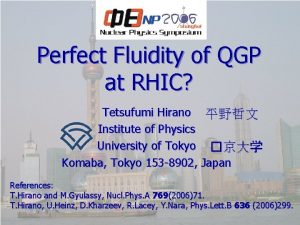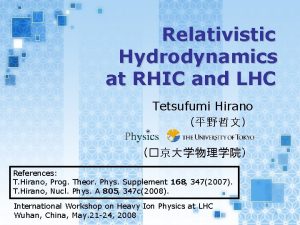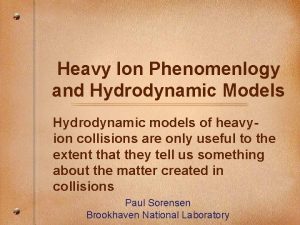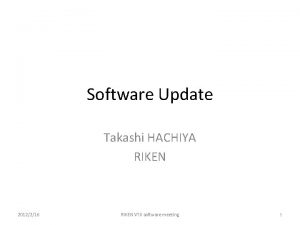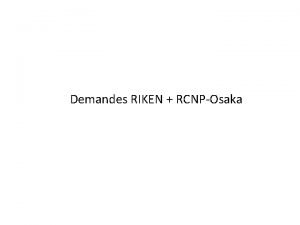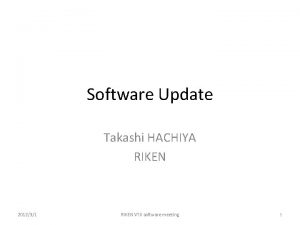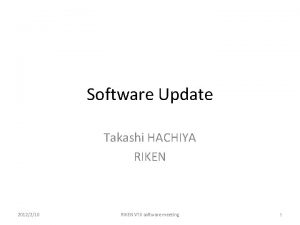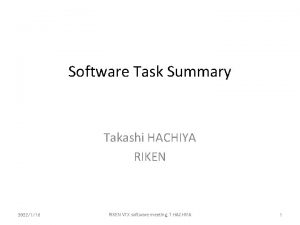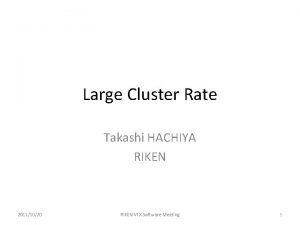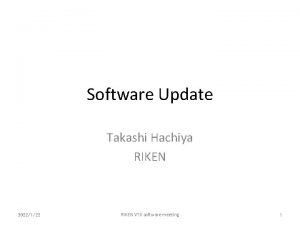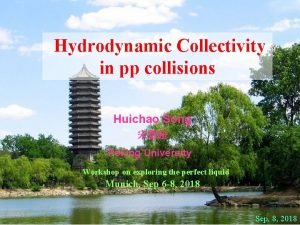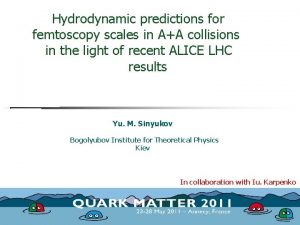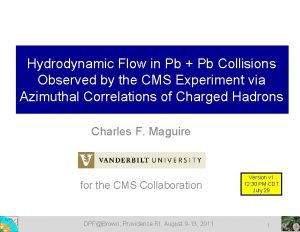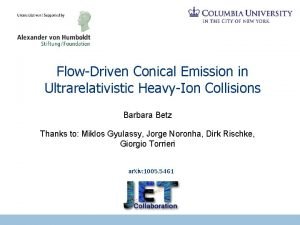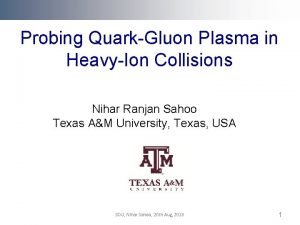Hydrodynamic Models of HeavyIon Collisions Tetsufumi Hirano RIKEN

































- Slides: 33

Hydrodynamic Models of Heavy-Ion Collisions Tetsufumi Hirano RIKEN BNL Research Center Tetsufumi Hirano (RBRC)

Parallel Talks Based on Hydro Jan. 13 • H. Niemi, Photon production from non-equilibrium QGP in heavy-ion collisions • M. Csanad, Indication for quark deconfinement and evidence for a Hubble flow in Au+Au collisions at RHIC Jan. 15 • Y. Nara, CGC, hydrodynamics and the parton energy loss • E. Shuryak, Why does the QGP behaves like a perfect fluid? • U. Heinz, Rapidity dependence of momentum anisotropies in nuclear collisions • D. Teaney, Viscosity and thermalization Tetsufumi Hirano (RBRC) 2

Outline 1. Why hydrodynamics? 2. How hydrodynamics works at RHIC 3. Hybrid models based on hydrodynamics – Information of the inside (jet quenching , EM probe) – Improvement of initial stage 4. Improvement of ideal hydro (viscosity) 5. Summary Tetsufumi Hirano (RBRC) 3

1. Why Hydrodynamics? Once we accept local thermalization ansatz, life becomes very easy. Static • Eo. S from Lattice QCD • Finite T, m field theory • Critical phenomena • Chiral property of hadron Energy-momentum: Conserved number: Dynamic Phenomena in HIC • Expansion, Flow • Space-time evolution of thermodynamic variables Caveat: Thermalization in HIC is a tough problem like building the Golden Gate Bridge! Tetsufumi Hirano (RBRC) 4

1. Why Hydrodynamics (contd. ) Space-time evolution of energy density in sqrt(s. NN)=200 Ge. V Au+Au collision at b=7. 2 fm Animation is here in the presentation. If you need, please ask me (hirano@bnl. gov). A full 3 D hydrodynamic simulation with a CGC initial condition Talk by Y. Nara Tetsufumi Hirano (RBRC) 5

Hydrodynamics provides us a very intuitive and simple description of relativistic heavy ion collisions. Tetsufumi Hirano (RBRC) 6

Outline 1. Why hydrodynamics? 2. How hydrodynamics works at RHIC 3. Hybrid models based on hydrodynamics – Information of the inside (jet quenching , EM probe) – Improvement of initial stage 4. Improvement of ideal hydro (viscosity) 5. Summary Tetsufumi Hirano (RBRC) 7

2. How Hydrodynamics Works at RHIC Elliptic flow (J. -Y. Ollitrault (’ 92)) How does the system respond to initial spatial anisotropy? Dense or dilute? If dense, thermalization? If thermalized, Eo. S? A. Poskanzer & S. Voloshin (’ 98) : P. Kolb(’ 03), Tetsufumi Hirano (RBRC) talk by A. Poskanzer 8

Elliptic Flow of Charged Particles P. Kolb et al. (’ 01) P. Huovinen(’ 03) T. H. (’ 01) Tetsufumi Hirano (RBRC) 9

Roughly speaking, ideal hydro gives a good description For improvement of models, talk by U. Heinz Tetsufumi Hirano (RBRC) 10

More on Elliptic Flow PHENIX, PRL 91(’ 03)182301. STAR, PRC 66(’ 02)034904 Hydro: P. Huovinen et al. (’ 01) See recent excellent reviews, P. Huovinen (QM 2002) , nucl-th/0305064; P. Kolb and U. Heinz, nucl-th/0305084; E. Shuryak, hep-ph/0312227, today’s talk. Tetsufumi Hirano (RBRC) Hydro: P. Kolb et al. (’ 99) (Note: Hydro+RQMD gives a better description. 11 D. Teaney et al. (’ 01))

Ideal hydro seems to give a good description at RHIC What’s next? 1. Making the most use of hydro models to study the RHIC physics 2. Checking how robust the current results are when hydro models are improved Tetsufumi Hirano (RBRC) 12

Outline 1. Why hydrodynamics? 2. How hydrodynamics works at RHIC 3. Hybrid models based on hydrodynamics – Information inside fluids (jet quenching , EM probe) – Improvement of initial stage 4. Improvement of ideal hydro (viscosity) 5. Summary Tetsufumi Hirano (RBRC) 13

3. 1 Information inside fluids Jet quenching is a manifestation of interaction between matter and partons (Talks by G. Moore and I. Vitev) For quantitative analysis, the information about the space-time evolution of matter is indispensable! Tetsufumi Hirano (RBRC) 14

3. 1. 1 Hydro as a Tool to Analyze Jet Quenching Jet quenching analysis taking account of (2+1)D hydro results (M. Gyulassy et al. (’ 02)) Animation is here in the presentation. If you need, please ask me hirano@bnl. gov Hydro+Jet model (T. H. & Y. Nara (’ 02)) GLV 1 st order formula (M. Gyulassy et al. (’ 00)) Parton density r(x) taken from full 3 D hydro simulations Movie and data of r(x) are available at http: //quark. phy. bnl. gov/~hirano/ Tetsufumi Hirano (RBRC) 15

Interplay between Soft and Hard Au+Au at b=2 fm T. H & Y. Nara(’ 03) (1/p. T)(d. N/dp. T) Hydrodynamic afterburner soft hard Crossing p. T moves toward high p. T Jet quenching It’s the very heavy ion physics! NSOFT~NHARD p. T Interesting region Intermediate p. T (2<p. T<3. 5 Ge. V/c) Pion hard, Proton soft Tetsufumi Hirano (RBRC) 16

Consequense from hadron species dependent p. T, cross Recombination Hydro+Jet RAA +Fragmentation Particle ratio Tetsufumi Hirano (RBRC) Talk by R. Fries 17

“Scaling v 2” Interplay between soft and hard? Recombination mechanism? Tetsufumi Hirano (RBRC) 18

3. 1. 2 Hydro as a Tool to Analyze Electromagnetic Radiation Thermal photon is a penetrating probe of QGP (E. Shuryak(’ 78)) • Production rate (Number per unit space-time volume) H. A. Weldon (’ 83), L. Mc. Lerran & T. Toimela (’ 84) C. Gale & J. Kapusta (’ 91) Talk by G. Moore • Invariant spectrum of photons D. K. Srivastava & B. Sinha(’ 94), J. Sollfrank et al. (’ 97), J. Alam et al. (’ 01) and a lot of work m u T, m Importance Tetsufumi of temperature profile Hirano (RBRC) 19

Chemical Non-Equilibrium Temperature (Me. V) QGP phase “Gluon Plasma (GP)” QGP Hadron phase Chemical freezeout QGP phase Hadron phase Hydro( ) Hydro + rate eq. Overpopulation of resonance Smaller d. o. f. Larger initial T Rapid cooling 800 700 600 500 Talk by H. Niemi T. H. & K. Tsuda(’ 02) 400 300 200 100 0 T. S. Biro et al. (’ 93), D. K. Srivastava et al. (’ 97), A. K. Chaudhuri(’ 00), D. M. Elliott & D. Rischke(’ 00) Tetsufumi Hirano (RBRC) N. Arbex et al. (’ 01), T. H. & K. Tsuda(’ 02), D. Teaney(’ 02), P. Kolb & R. Rapp(’ 03) 20

Novel Temperature Evolution chemical non-eq. temperature chemical eq. Tc proper time Caveat: one has to take account of fugacity l in calculating EM spectra. • QGP phase: l<1 • Hadron phase: l>1 Compensation between T and l? Talk by H. Niemi Tetsufumi Hirano (RBRC) 21

Tetsufumi Hirano (RBRC) 22

3. 2 Improvement of Initial Condition -Toward an unified model in HICGroup Hydro Initial condition M. Gyulassy et al. SHASTA (2+1 D, Bjorken) HIJING, event-by-event C. Nonaka et al. Lagrangian hydro (full 3 D) URASi. MA, event average B. Schlei et al. HYLANDER (2+1 D) VNI, event average C. E. Aguiar et al. SPhe. RIO (full 3 D) Ne. Xus, event-by-event L. P. Csernai et al. Particle-in-cell (full 3 D) String ropes, flux tubes, classical YM K. Eskola et al. SHASTA (2+1 D, Bjorken) p. QCD + final state saturation T. H. & Y. Nara t-h coordinate (full 3 D) CGC, f(k. T 2, x) a la Kharzeev & Levin … … Tetsufumi Hirano (RBRC) 23

*Smoothed Particle hydrodynamical evolution of Relativistic heavy IOn collisions (Sao Paulo & Rio de Janeiro) 3. 2. 1 SPhe. RIO* C. E. Aguiar, R. Andrade, F. Grassi, Y. Hama, T. Kodama, T. Osada, O. Socolowski Jr…. Poster by F. Grassi Main features: • “Particle” method (a kind of Lagrangian hydro) • Numerical cost cheaper than conventional finite grids method (Even in 3+1 D, any geometry) • Event-by-event physics (Ne. Xus + SPhe. RIO=Ne. XSPhe. RIO) (Ne. Xus: parton based Gribov-Regge theory) SPhe. RIO Conventional approach Energy density of single event Spectra from Similar approach based on HIJING: Tetsufumi Hirano (RBRC) M. Gyulassy et al. (’ 97) 24

Initial Conditions in Ne. XSPhe. RIO Energy density in the transverse plane (z=0) Bumpy! Single event (b=0 fm) Average over 30 events (b=0 fm) Tetsufumi Hirano (RBRC) 25

Results from Ne. XSPhe. RIO Pb+Pb 17. 3 A Ge. V Effect of initial energy density fluctuation (simple Eo. S case): : (event average) Negative! Multiplicity is reduced by ~10%! p. T slope is not affected largely. v 2(p. T) and its fluctuation? Now the hydro simulation becomes close to experimental situations like event-generators! Tetsufumi Hirano (RBRC) 26

3. 2. 2 CGC+Hydro+Jet Model. T. H. & Y. Nara Talk by J. Jalilian-Marian Dense Medium Talk by I. Vitev These three physics closely related with each other! Tetsufumi Hirano (RBRC) 27

momentum scale CGC+Hydro+Jet Model (contd. ) collinear p. QCD factorization 2 2 parton dilute Parton energy loss CGC k. T factorization Full 3 D gg g small x hydro evolution dense Initial condition of energy density from CGC Au+Au 200 AGe. V b=7. 2 fm, t 0 =0. 6 fm transverse Tetsufumi Hirano (RBRC) time longitudinal 28

Results from CGC+hydro+jet Au+Au sqrt(s. NN) = 200 Ge. V CGC initial condition works very well! (Energy, rapidity, centrality dependences) For details, talk by Y. Nara Tetsufumi Hirano (RBRC) 29

Outline 1. Why hydrodynamics? 2. How hydrodynamics works at RHIC 3. Hybrid models based on hydrodynamics – Information of the inside (jet quenching , EM probe) – Improvement of initial stage 4. Improvement of ideal hydro (viscosity) 5. Summary Tetsufumi Hirano (RBRC) 30

4. Viscosity Talks by E. Shuryak and D. Teaney Change not only the equations of motion but the local thermal distribution function A. Dumitru(’ 02), D. Teaney(’ 03) • Blast wave model + dist. fn. with viscous correction 1 st order correction to dist. fn. : : Sound attenuation length : Tensor part of thermodynamic force Reynolds number in Bjorken flow Nearly ideal hydro !? Tetsufumi Hirano (RBRC) D. Teaney(’ 03) 31

Break Down of Naive Navier-Stokes Eq. and a Relaxation Method • Non-relativistic case (Based on discussion by Cattaneo (1948)) Balance eq. : t 0: Fourier’s law Constitutive eq. : t : “relaxation time” Parabolic equation (heat equation) ACAUSAL!! Finite t Hyperbolic equation (telegraph equation) Tetsufumi Hirano (RBRC) Talk by D. Teaney See also, A. Muronga (’ 02) 32

5. Summary Hydrodynamics is one of the valuable tools at RHIC energies • Open our mind ! Hydrodynamics can be used even for “high p. T physics in HIC”. – – Jet tomography EM probe (J/Y suppression) … • Keep in mind ! How robust is the current agreement of hydro? : – – – Chemical non-eq. ? Initial fluctuation? Viscosity? Thermalization? Eo. S? (Freeze-out? ) Tetsufumi Hirano (RBRC) 33
 Ley 27815 comentada
Ley 27815 comentada Gks hesaplama
Gks hesaplama Riken
Riken Hydrodynamic lubrication
Hydrodynamic lubrication Hydrodynamic radius
Hydrodynamic radius Fluid mechanics fundamentals and applications
Fluid mechanics fundamentals and applications Acust oil max
Acust oil max Hydrodynamic entry length formula
Hydrodynamic entry length formula Hydrodynamic voltammetry
Hydrodynamic voltammetry Hydraulic diameter formula
Hydraulic diameter formula Jeans escape
Jeans escape Modals and semimodals
Modals and semimodals Slidetodoc.com
Slidetodoc.com Collisions
Collisions Collisions and explosions
Collisions and explosions To avoid collisions a defensive driver should
To avoid collisions a defensive driver should The space between traffic clusters is called a
The space between traffic clusters is called a To avoid collisions a defensive driver should
To avoid collisions a defensive driver should Type of momentum
Type of momentum Aplusphysics momentum-conservation answer key
Aplusphysics momentum-conservation answer key Chapter 6 momentum
Chapter 6 momentum Collisions and explosions
Collisions and explosions Momentum with friction equation
Momentum with friction equation Prévention des collisions engins-piétons
Prévention des collisions engins-piétons Drawbacks of free electron theory
Drawbacks of free electron theory Elastic potential energy real world examples
Elastic potential energy real world examples Elastic collisions
Elastic collisions Types of collision
Types of collision A freight train is being assembled in a switching yard
A freight train is being assembled in a switching yard Inelastic collision
Inelastic collision Collision frequency formula
Collision frequency formula A roller coaster climbs up a hill at 4m/s and then
A roller coaster climbs up a hill at 4m/s and then Ap physics collisions
Ap physics collisions Impulse and momentum relation
Impulse and momentum relation



